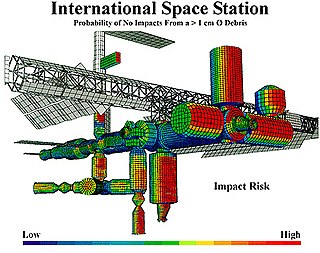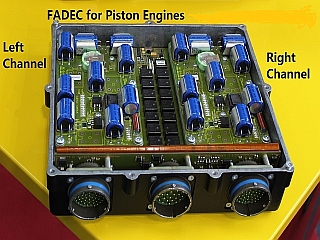Related Research Articles

Safety engineering is an engineering discipline which assures that engineered systems provide acceptable levels of safety. It is strongly related to industrial engineering/systems engineering, and the subset system safety engineering. Safety engineering assures that a life-critical system behaves as needed, even when components fail.
In reliability engineering, the term availability has the following meanings:

Fault tree analysis (FTA) is a type of failure analysis in which an undesired state of a system is examined. This analysis method is mainly used in safety engineering and reliability engineering to understand how systems can fail, to identify the best ways to reduce risk and to determine event rates of a safety accident or a particular system level (functional) failure. FTA is used in the aerospace, nuclear power, chemical and process, pharmaceutical, petrochemical and other high-hazard industries; but is also used in fields as diverse as risk factor identification relating to social service system failure. FTA is also used in software engineering for debugging purposes and is closely related to cause-elimination technique used to detect bugs.

A safety-critical system or life-critical system is a system whose failure or malfunction may result in one of the following outcomes:

A full authority digital enginecontrol (FADEC) is a system consisting of a digital computer, called an "electronic engine controller" (EEC) or "engine control unit" (ECU), and its related accessories that control all aspects of aircraft engine performance. FADECs have been produced for both piston engines and jet engines.
In systems engineering, dependability is a measure of a system's availability, reliability, maintainability, and in some cases, other characteristics such as durability, safety and security. In real-time computing, dependability is the ability to provide services that can be trusted within a time-period. The service guarantees must hold even when the system is subject to attacks or natural failures.
Failure mode and effects analysis is the process of reviewing as many components, assemblies, and subsystems as possible to identify potential failure modes in a system and their causes and effects. For each component, the failure modes and their resulting effects on the rest of the system are recorded in a specific FMEA worksheet. There are numerous variations of such worksheets. An FMEA can be a qualitative analysis, but may be put on a quantitative basis when mathematical failure rate models are combined with a statistical failure mode ratio database. It was one of the first highly structured, systematic techniques for failure analysis. It was developed by reliability engineers in the late 1950s to study problems that might arise from malfunctions of military systems. An FMEA is often the first step of a system reliability study.
Failure rate is the frequency with which an engineered system or component fails, expressed in failures per unit of time. It is usually denoted by the Greek letter λ (lambda) and is often used in reliability engineering.
Human reliability is related to the field of human factors and ergonomics, and refers to the reliability of humans in fields including manufacturing, medicine and nuclear power. Human performance can be affected by many factors such as age, state of mind, physical health, attitude, emotions, propensity for certain common mistakes, errors and cognitive biases, etc.
Reliability engineering is a sub-discipline of systems engineering that emphasizes the ability of equipment to function without failure. Reliability describes the ability of a system or component to function under stated conditions for a specified period of time. Reliability is closely related to availability, which is typically described as the ability of a component or system to function at a specified moment or interval of time.
Integrated logistics support (ILS) is a technology in the system engineering to lower a product life cycle cost and decrease demand for logistics by the maintenance system optimization to ease the product support. Although originally developed for military purposes, it is also widely used in commercial customer service organisations.
A hazard analysis is used as the first step in a process used to assess risk. The result of a hazard analysis is the identification of different types of hazards. A hazard is a potential condition and exists or not. It may, in single existence or in combination with other hazards and conditions, become an actual Functional Failure or Accident (Mishap). The way this exactly happens in one particular sequence is called a scenario. This scenario has a probability of occurrence. Often a system has many potential failure scenarios. It also is assigned a classification, based on the worst case severity of the end condition. Risk is the combination of probability and severity. Preliminary risk levels can be provided in the hazard analysis. The validation, more precise prediction (verification) and acceptance of risk is determined in the risk assessment (analysis). The main goal of both is to provide the best selection of means of controlling or eliminating the risk. The term is used in several engineering specialties, including avionics, food safety, occupational safety and health, process safety, reliability engineering.
Failure mode effects and criticality analysis (FMECA) is an extension of failure mode and effects analysis (FMEA).
High availability (HA) is a characteristic of a system that aims to ensure an agreed level of operational performance, usually uptime, for a higher than normal period.
In software engineering, software system safety optimizes system safety in the design, development, use, and maintenance of software systems and their integration with safety-critical hardware systems in an operational environment.
Reliability-centered maintenance (RCM) is a concept of maintenance planning to ensure that systems continue to do what their user require in their present operating context. Successful implementation of RCM will lead to increase in cost effectiveness, reliability, machine uptime, and a greater understanding of the level of risk that the organization is managing.
Risk-based inspection (RBI) is an optimal maintenance business process used to examine equipment such as pressure vessels, quick-opening closure - doors, heat exchangers, and piping in industrial plants. RBI is a decision-making methodology for optimizing inspection plans. The RBI concept lies in that the risk of failure can be assessed in relation to a level that is acceptable, and inspection and repair used to ensure that the level of risk is below that acceptance limit. It examines the health, safety and environment and business risk of ‘active’ and ‘potential’ damage mechanisms to assess and rank failure probability and consequence. This ranking is used to optimize inspection intervals based on site-acceptable risk levels and operating limits, while mitigating risks as appropriate. RBI analysis can be qualitative, quantitative or semi-quantitative in nature.
Software reliability testing is a field of software-testing that relates to testing a software's ability to function, given environmental conditions, for a particular amount of time. Software reliability testing helps discover many problems in the software design and functionality.
Failure modes, effects, and diagnostic analysis (FMEDA) is a systematic analysis technique to obtain subsystem / product level failure rates, failure modes and diagnostic capability. The FMEDA technique considers:

The Offshore and Onshore Reliability Data (OREDA) project was established in 1981 in cooperation with the Norwegian Petroleum Directorate. It is "one of the main reliability data sources for the oil and gas industry" and considered "a unique data source on failure rates, failure mode distribution and repair times for equipment used in the offshore industr[y]. OREDA's original objective was the collection of petroleum industry safety equipment reliability data. The current organization, as a cooperating group of several petroleum and natural gas companies, was established in 1983, and at the same time the scope of OREDA was extended to cover reliability data from a wide range of equipment used in oil and gas exploration and production (E&P). OREDA primarily covers offshore, subsea and topside equipment, but does also include some onshore E&P, and some downstream equipment as well.
References
- ↑ "Reliability, Availability, and Maintainability - SEBoK". RAMBoK Project. Retrieved 2019-05-26.
- ↑ System safety, Norwegian University of Science and Technology